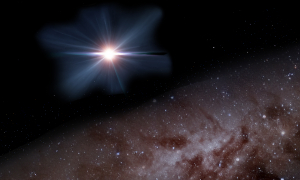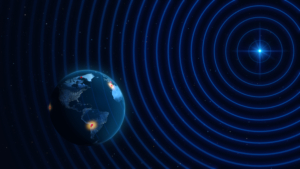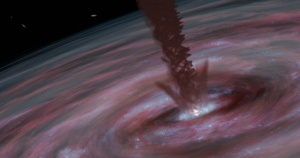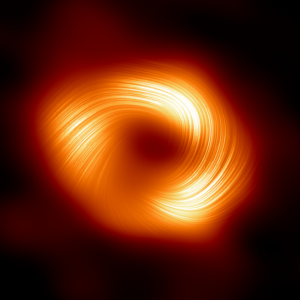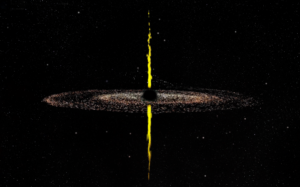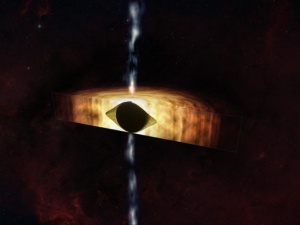A groundbreaking discovery has revealed the presence of a blazar—a supermassive black hole with a jet pointed directly at Earth—at an extraordinary redshift of 7.0. The object, designated VLASS J041009.05−013919.88 (J0410−0139), is the most distant blazar ever identified, providing a rare glimpse into the epoch of reionization when the universe was less than 800 million years old. This discovery challenges existing models of black hole and galaxy formation in the early cosmos.
Astronomers Make Highest-Resolution Observations Ever from Earth
The Event Horizon Telescope (EHT) Collaboration has conducted test observations with the highest resolution ever obtained from the surface…
Supermassive Black Hole Appears to Grow Like a Baby Star
How do supermassive black holes get so big? An international team of astronomers, including scientists at the U.S. National Science Foundation National Radio Astronomy Observatory (NSF NRAO) have discovered a powerful, rotating, magnetic wind that they believe is helping a galaxy’s central supermassive black hole to grow.
Astronomers Unveil Strong Magnetic Fields Spiraling at the Edge of Milky Way’s Central Black Hole
The Event Horizon Telescope (EHT) collaboration has observed spirals of light escaping from the edge of the supermassive black…
Radio Observations of Compact Symmetric Objects Shed New Light on Black Hole Phenomenon
Compact Symmetric Objects (CSOs) have long puzzled astronomers with their unique characteristics. These active galaxies harbor supermassive black holes that emit powerful jets traveling at near-light speeds in opposite directions. However, unlike their counterparts in other galaxies, these jets remain compact, not extending out to great distances as expected. For decades, scientists presumed that CSOs were youthful entities, with their jets destined to expand over time. New findings, published in three papers in The Astrophysical Journal, challenge this notion.
Telescopes Show the Milky Way’s Black Hole is Ready for a Kick
A new study may help settle the question of how rapidly the Milky Way’s supermassive black hole is spinning.






